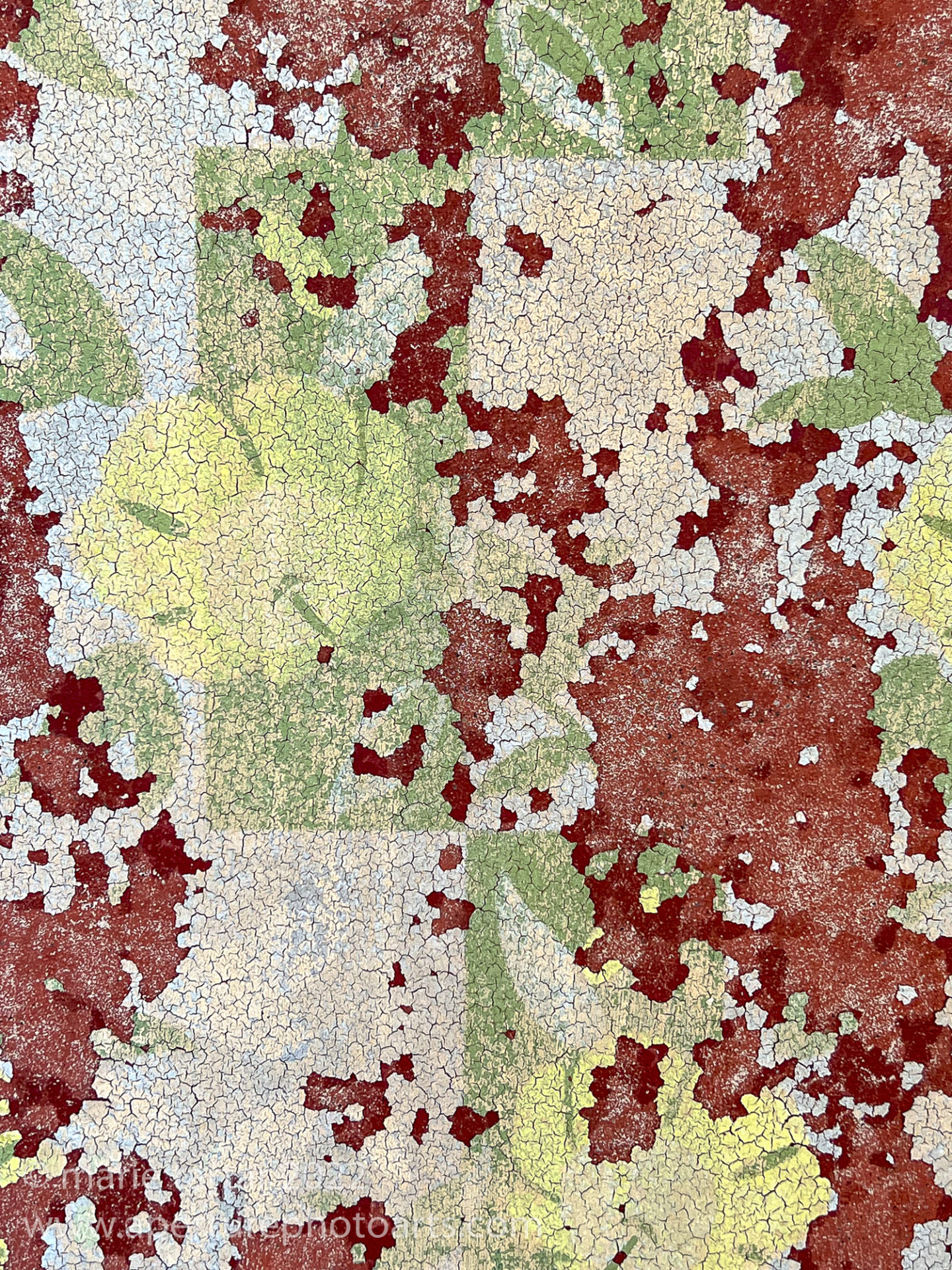
Tuesday, May 31, 2022
After a terrific launch of our Complete Namibia photographic tour with Martin Bailey in the Quiver Tree Forest and Giant’s Playground, we did a complete photographic about-face today. Diamonds were and still are an important Namibian export. Diamonds mined in Namibia are alluvial and formed underground eons again in South Africa. Volcanic eruptions in South Africa drove kimberlite, a diamond-containing igneous rock, towards the earth’s surface. Over time, these deposits were swept via rivers and ocean currents from South Africa up the Atlantic coast of southern Namibia. Above ground mining operations involve sifting and separation of diamonds from a sedimentary slurry. In more recent decades, the ocean floor off the coast of Namibia is combed to extract diamonds. Because of the forces these diamonds sustained on their journey from South Africa to Namibia, a relatively high percentage of Namibian diamonds are gem-quality.
Although I love jewelry, I have never really been into diamonds (I’m more of a “pearl girl” at heart) but the history of how the De Beers company created the expectation that engagement and marriage must be sealed with a diamond engagement ring is quite a marketing success story, at a minimum. At one level, the rarity of diamonds and the extreme conditions under which they are formed (near pure crystallized carbon, compressed by temperature and pressure ages ago 70-120 miles under the earth’s surface) are a nice metaphor for marriage. On the other hand, this is a historically recent development with a troubled legacy, to say the least. Although Namibia is now regarded generally favorably as a source for conflict-free diamonds, its early history in this arena is less illustrious.
As I write this (in July), we just celebrated our 33rd wedding anniversary. We were impoverished radiology residents when we married, when paying the credit card off each month was a major financial turning point. I wouldn’t even have a diamond engagement ring but for my mother-in-law, who came up with a family ring that we had reset into a typical Tiffany style setting, which I proceeded to never wear. Being in medicine and pulling on gloves regularly to do procedures, it was a pain. Eventually, I had the diamond made into a necklace, which also languishes, infrequently worn.
But I understand the allure of the world’s hardest substance for other people, especially after this trip, seeing the conditions under which people are willing to live and the lengths to which people are driven to pursue their dreams of riches. The area we explored for two days sprang into life with a chance discovery, analogous to the Gold Rush in California in 1848. We also saw dark hints of exploitation.

Kolmanskuppe: With the roof long gone, the rafters overhead yielded nice patterns. While the buildings are still standing, the forces of nature are clearly at work, eroding the door jambs and exposing the infrastructure below. And yes, that’s sand on the floor.
We spent the afternoon exploring and photographing an unusual ghost town, Kolmanskuppe, an enclave of houses, shops and a school which the desert is reclaiming (alternate spelling: Kolmanskop). It was an outpost of Namdeb (a joint venture of the Namibian government and De Beers with the motto, On diamonds we build) which once housed a thousand settlers after diamonds were found glinting in the sand by a railroad worker in 1908.
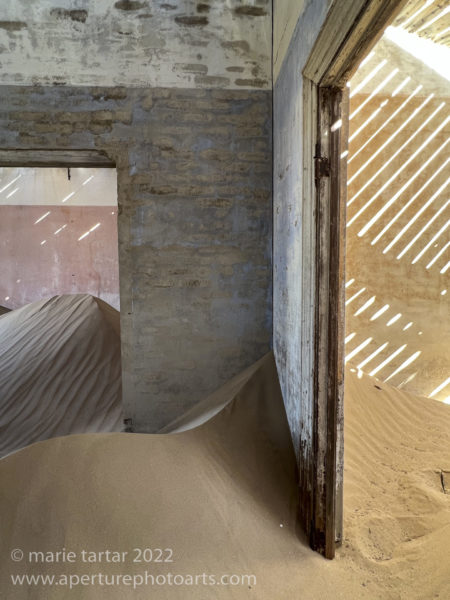
Stripes and sand in Kolmanskuppe, Namibia, a former diamond mining boomtown, abandoned since 1956. The surrounding desert is encroaching on it, with dunes piling up in former homes and businesses.
In boom and bust fashion, the town sprang into existence by 1912, harvesting a million carats of diamonds per year. Intensive mining and discovery of even richer diamond fields to the south in 1928 led to the town’s inexorable decline in the 1930s and complete abandonment by 1956. Since then, it has been progressively decaying, with sand dunes reclaiming forlorn empty buildings.
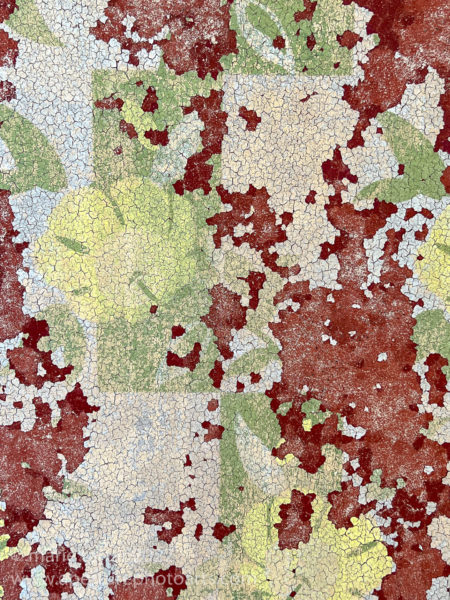
Kolmanskuppe detail: The floral wallpaper pattern can still be made out, although bit by bit, the underlying wall is being revealed with time.
Our accommodation for two nights was the Lüderitz Nest Hotel, a modern accommodation on the waterfront.
Wednesday June 1, 2022
We returned in the morning to Kolmanskuppe to sign in to visit another abandoned diamond mining town, Elizabeth Bay. To visit this site, in an even more advanced state of decay, we had to sign separate waivers, lest a roof cave in on us or a floor give way. There is still some ongoing mining, mostly of industrial quality diamonds, so security is tight, with signs posted advising that there is no going to toilet before entering search rooms.

While we were waiting for clearance to go to Elizabeth Bay, I noticed this interesting juxtaposition of interior fiberglass and exterior foliage.
Following the local guide in our vehicle, a cry of “Wait, wait, wait, wait!” erupted as we eased out of Kolmanskuppe. A control bar narrowly missed the front of our Toyota Landrover. Jackals scampered over the sand as we approached lonely, desolate Elizabeth Bay, a study of decay through neglect, wind, erosion and rust, leaving traces of interrupted dreams and lives frozen in time. Martin, who was last here 3 years ago, noted the buildings had really progressed in their decline.
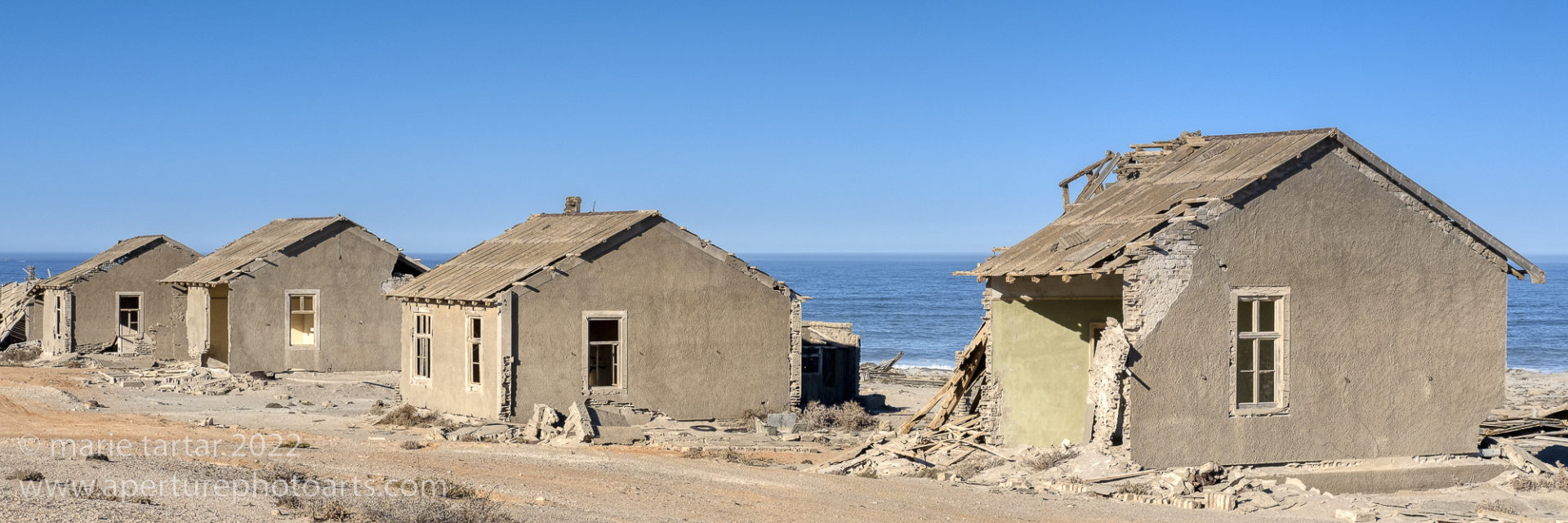
Oceanview, but not luxurious: This row of cottages housed diamond miners, mostly German, seeking their fortunes at Elizabeth Bay, Namibia, between 1928-1948.
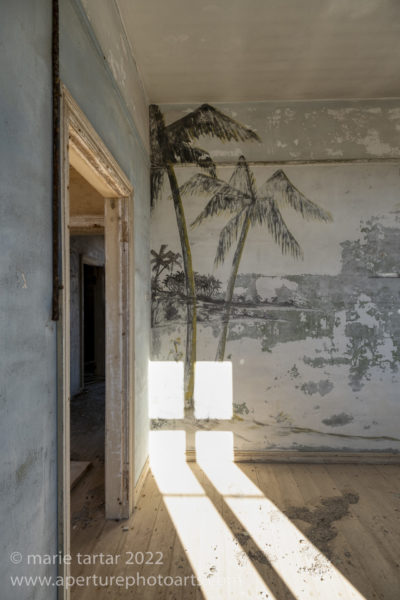
The interior of this cottage is particularly poignant. Its occupant painted these palm trees to entice his sweetheart to join him in Elizabeth Bay, Namibia.
Many of the structures, constructed of bricks made with seawater, now consist of a mortar latticework, as the bricks dissolve, leaving the infrastructure behind.
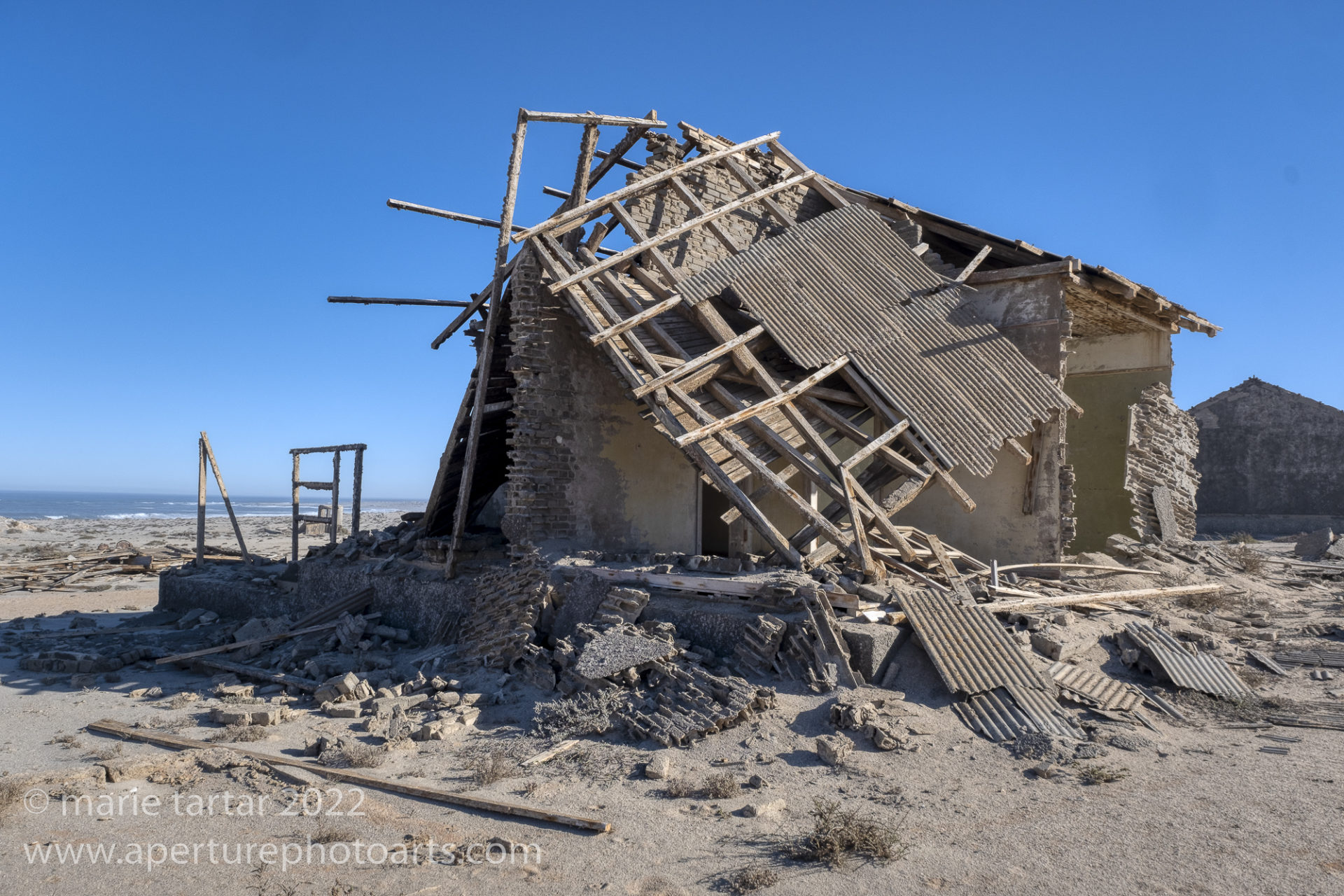
The resulting image, with whole wall sections and portions of the roof raining down on this disintegrating structure at Elizabeth Bay, Namibia. All I could think about as I saw this implosion in process was a puzzling contemporary art installation I saw years ago in Paris at Centre Pompidou (below).
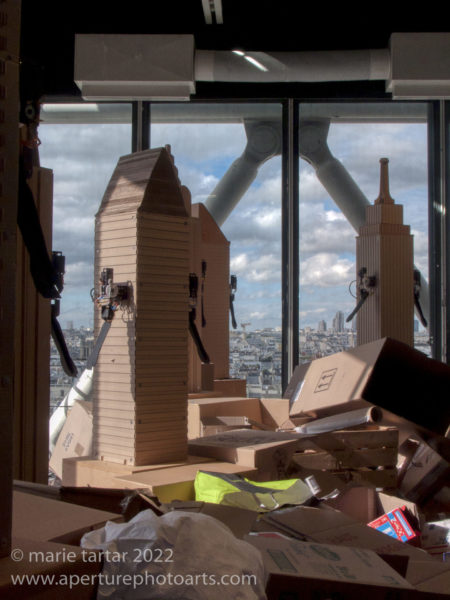
Centre Pompidou, Paris, summer of 2010. I found this work puzzling, then as now, with architectural forms surrounded by heaped up rubbish.
There is a stark disparity among the decaying housing stock, from small single family homes with rotting wallpaper still hinting at domesticity, which mostly housed German miners to the “worker’s quarters” in which local workers, indigenous Namibians, slept. The official story is that the workers were paid a wage; therefore, were not slaves. Seeing their spartan, coffin-like sleeping quarters and learning that the doors were locked at night suggests otherwise.
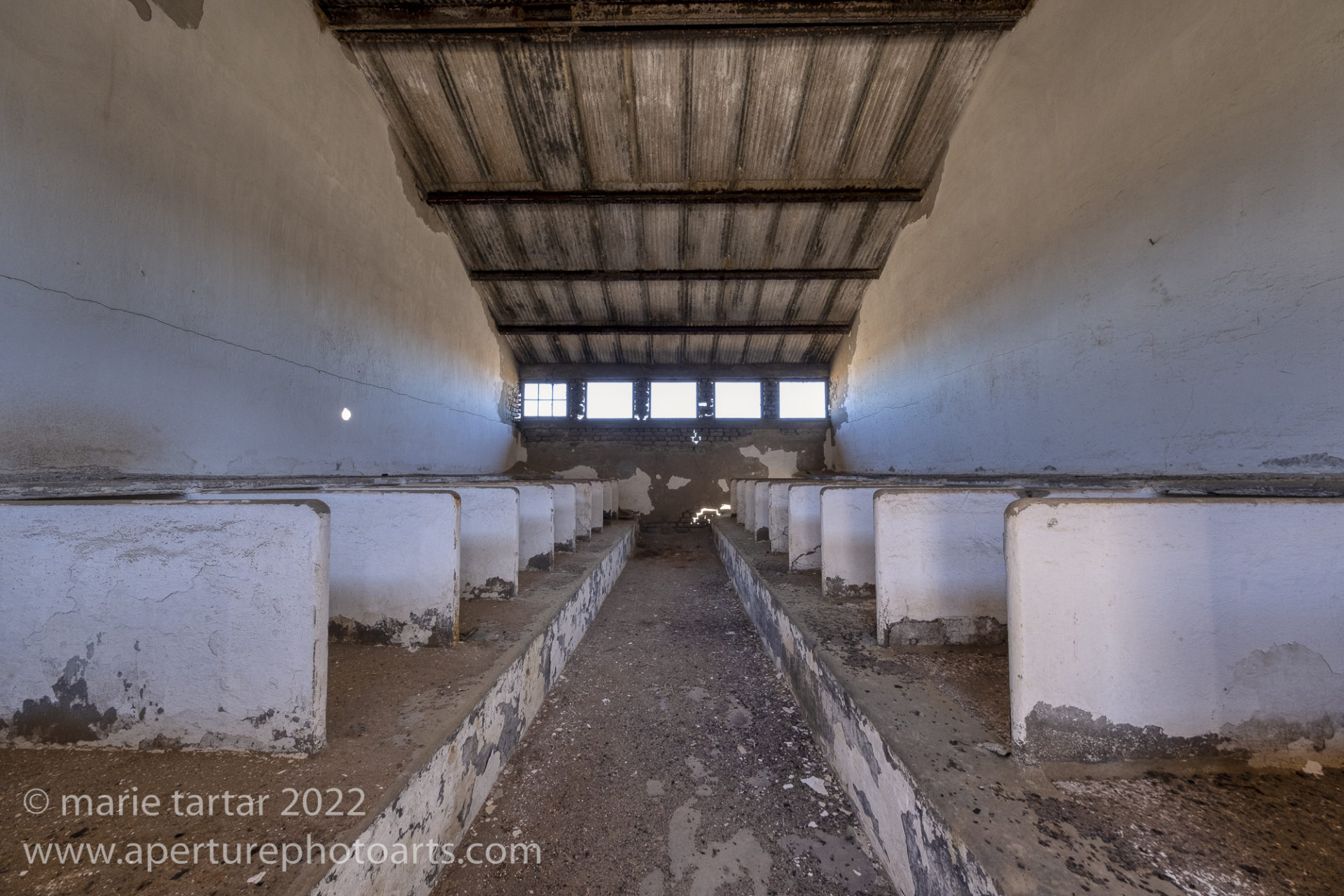
The worker’s quarters at Elizabeth Bay, an especially grim, dormitory-like housing situation. No ocean view from these highly placed windows, possibly positioned to keep workers from escaping? Another building had a double decker stack of TWO rows of partitions like this.
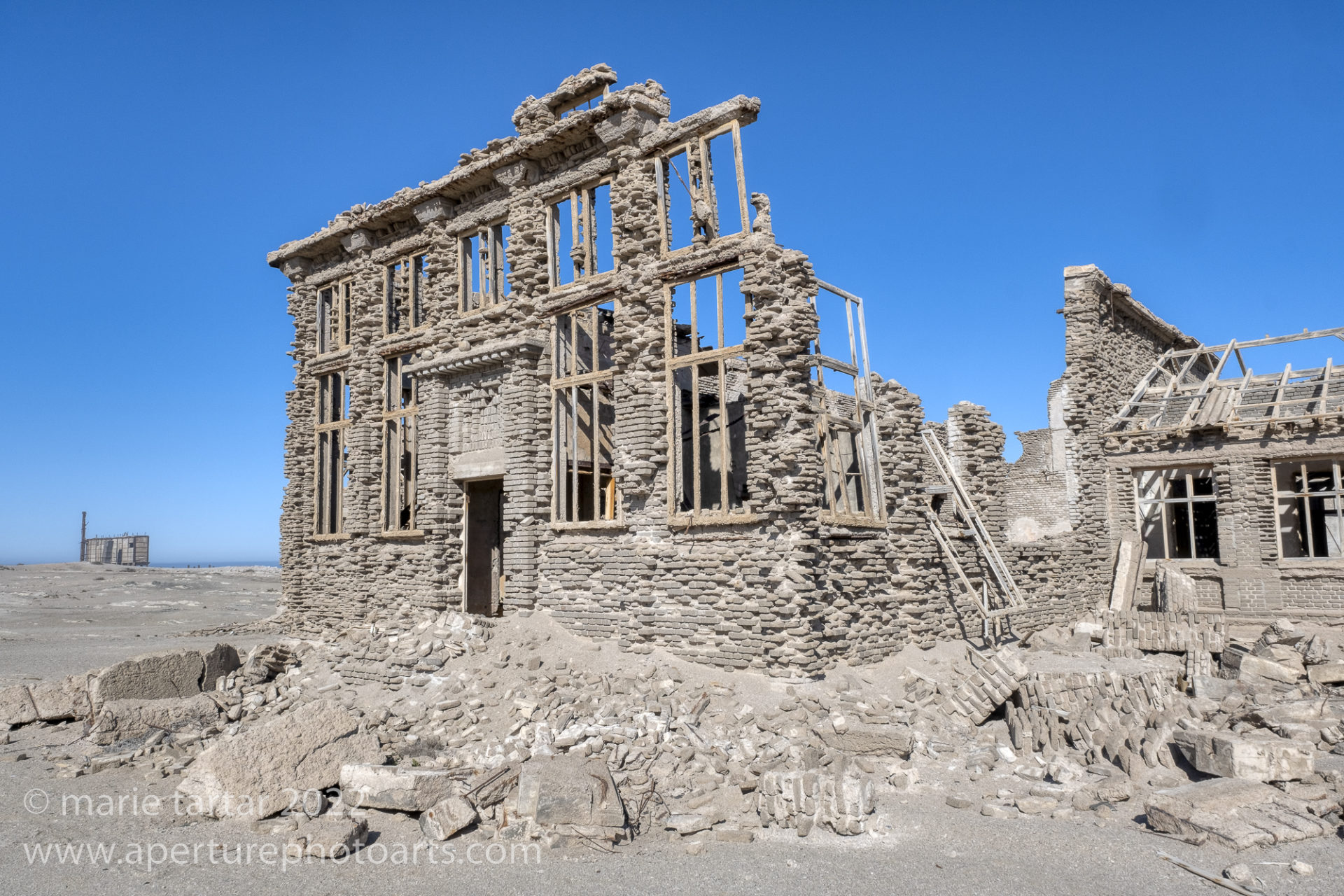
The casino at Elizabeth Bay, presumably where the workers spent the bulk of their hard-won money, is crumbling.
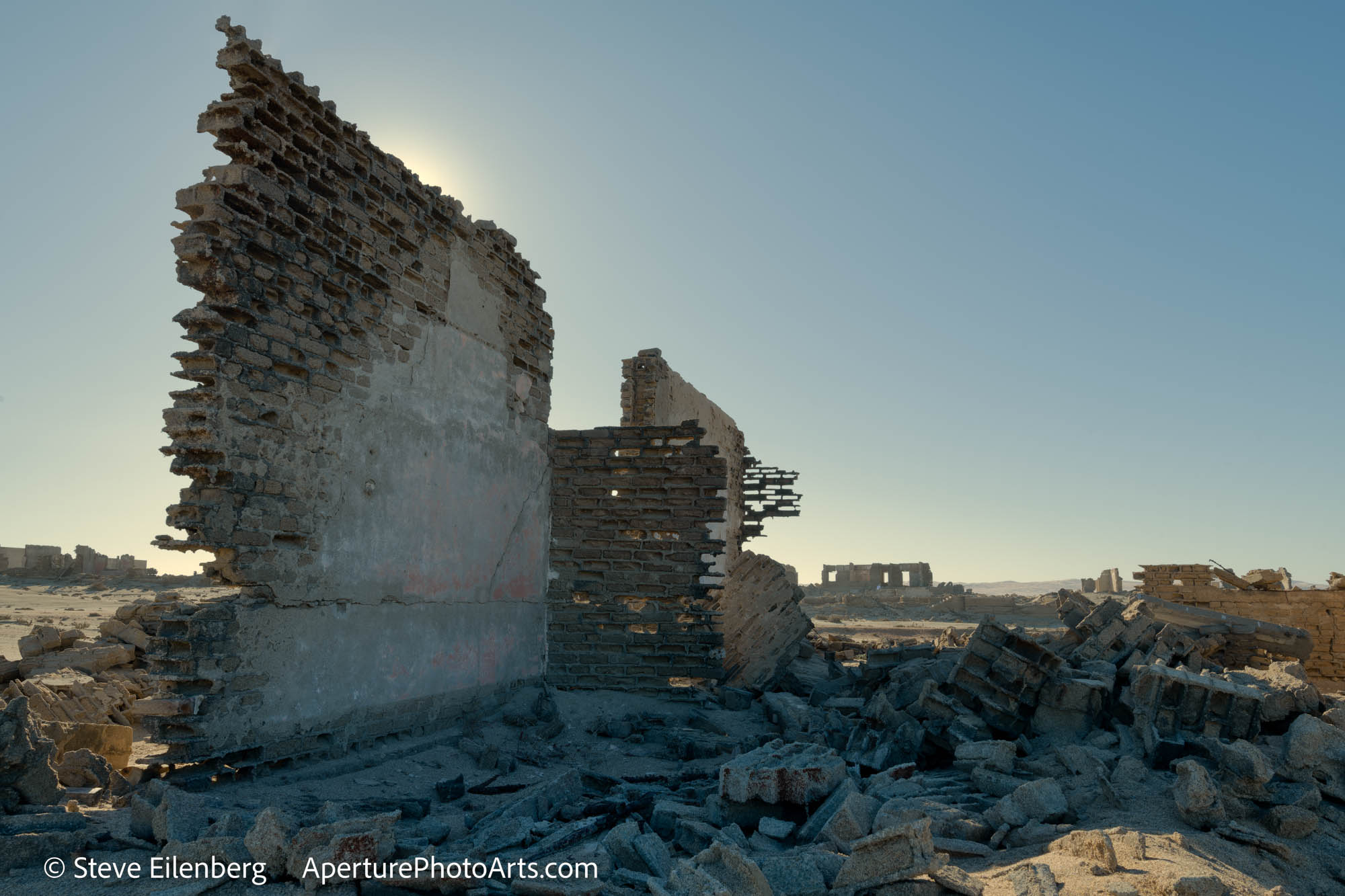
Last wall standing, Elizabeth Bay, Namibia. Notice the latticework of mortar, the salt-water formed bricks having returned to oblivion.

An artfully broken window in Elizabeth Bay, Namibia made me think of the work of Louise Nevelson (1899-1988), a pioneering sculptor of the 20th century.
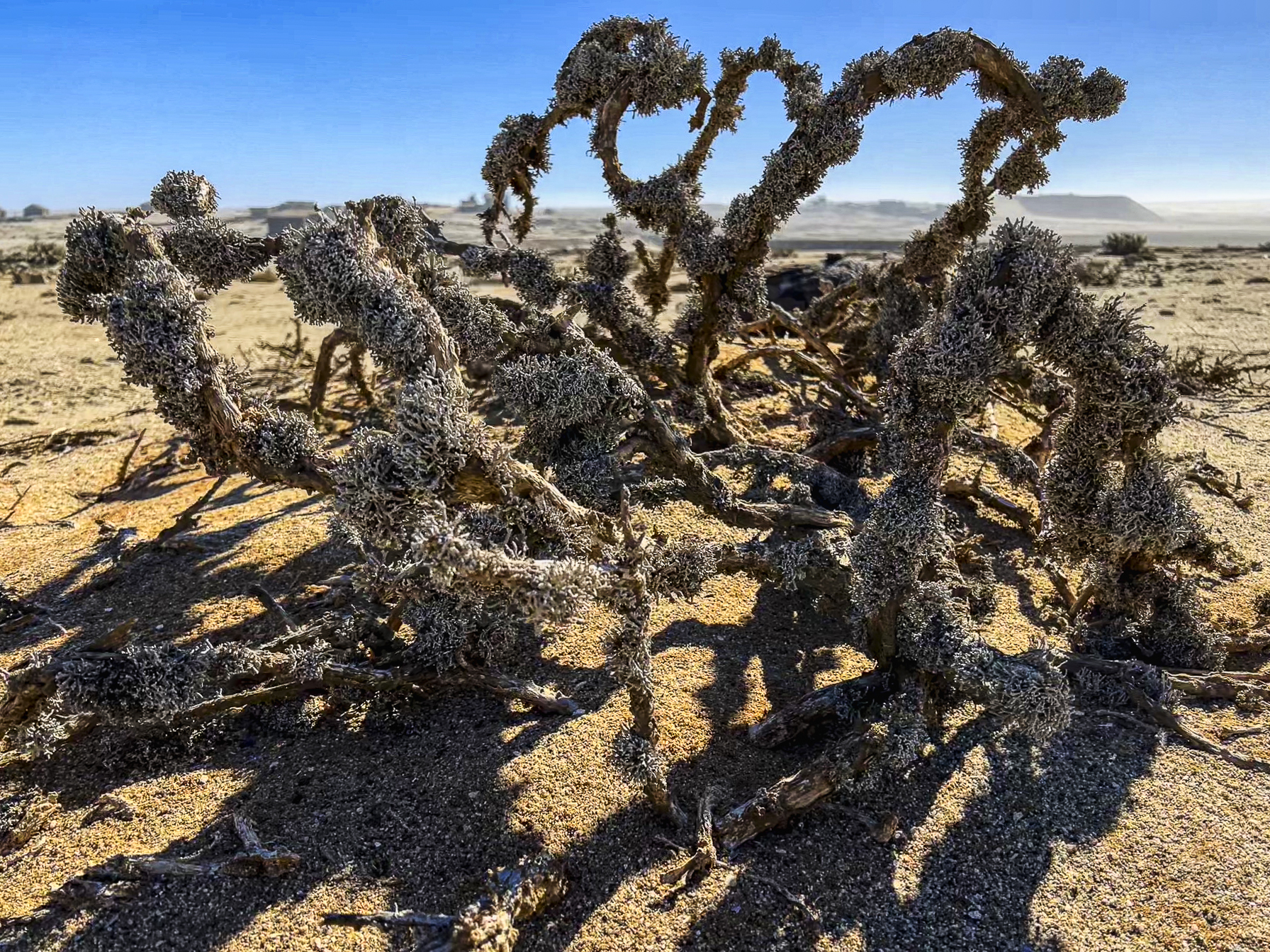
Another creepy Elizabeth Bay element: all I could think of when I saw this inhospitable-appearing desert plant was that signature work of another pioneering 20th century sculptor, Louise Bourgeois, namely her giant spider sculptures called Maman (French for mother).
After lunch, we returned to Kolmanskuppe for a second afternoon shoot. It was hot and hard work slogging through the loose sand between buildings.

The striped effect of the sun coming through the bare rafters of this structure was even more striking on our second afternoon at Kolmanskuppe.
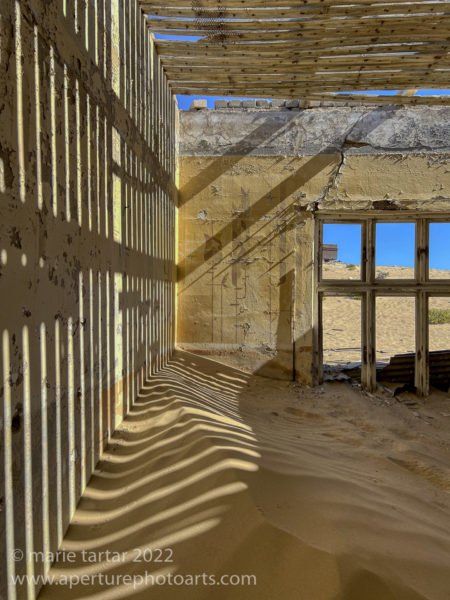
Kolmanskuppe: Notice the stylized floral pattern of the wallpaper on the far wall, still discernible despite the encroaching dunes and absent roof.

A band of stylized fruit encircles the room, a bare trace of the gentility which must have once graced this room in Kolmanskuppe.
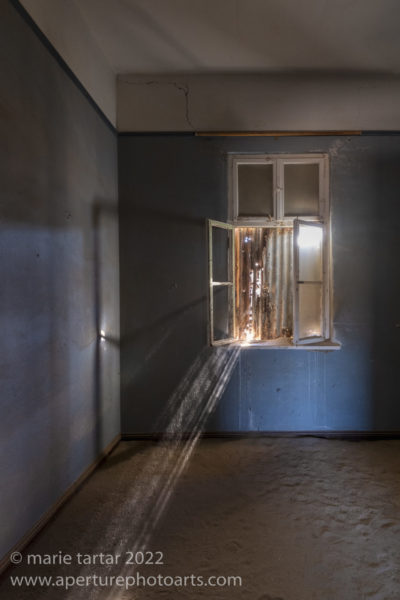
Gaining entry into this dark room in Kolmanskuppe, Namibia required directions from Martin and some gymnastics. It made me think of that horrifying movie Room with Brie Larson, for which she won an Academy Award for a difficult and demanding role as a woman imprisoned with her son, the child of her captor.

Other scenes in Kolmanskuppe, Namibia brought happier associations: this roofless room being overtaken by a mounting sand dune reminds me of sky-viewing Skylight Series works by contemporary Light and Space artist James Turrell.
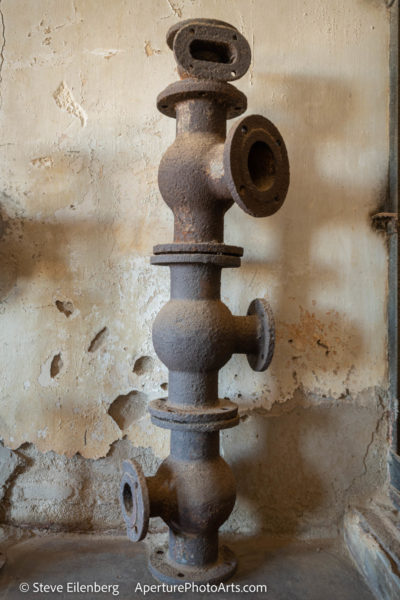
More artwork associations: Steve’s image of this abandoned machinery from Kolmanskuppe, Namibia reminded him of a multi-part ceramic sculpture of Isamu Noguchi’s that we both love at MOMA in New York.
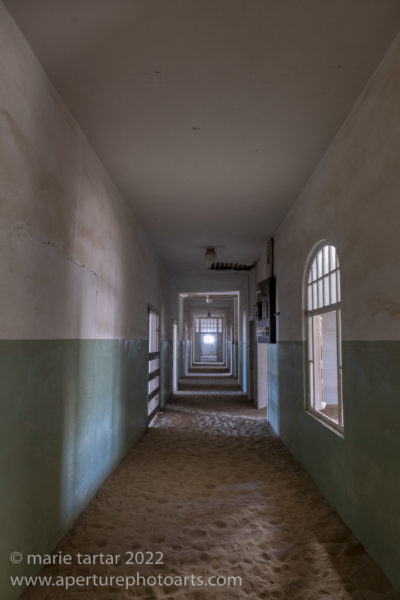
How can a long hallway be so sinister? All I can think of when I see this is that endless hallway in Kolmanskuppe, Namibia is The Shining, the one in which the child furiously pedals his tricycle.

Sand tracks through a series of doors in Kolmanskuppe, Namibia, where nature is slowly but surely having its way with the remnants of man’s footprint in this desert.
For a demanding photographic itinerary, I accomplished a surprising amount of reading on this trip, between long flights (up to 10 hours), long layovers (up to 8 hours) and longish drives between destinations (longest 8 hours). Namibia is a sizable country, and distances between points of major interest can be considerable. That said, I thought this trip was very well organized and paced, as we spent 2 nights in most destinations. Although these diamond mining towns were not motivators for me to sign up on this trip, I did find this segment photographically interesting and psychologically challenging.
I have been on an African literature jag for a while, which continued unabated this trip. Today, I starting reading Paradise by Abdulrazak Gurnah, the selection for my next book club session. Gurnah won the Nobel Prize for literature in 2021. I enjoyed this tale of Yusef, a young boy whose life is disrupted when he is given up to serve “Uncle Aziz” as payment for debts owed by his father. It is a time of turmoil, as Germany seeks to wrest control of East Africa. When the roads were too rough to keep my eyes on the Kindle app on my phone, I continued listening to Glory, by Noviolet Bulawayo, a Zimbawean writer whose We Need New Names was a favorite of my book club several years ago. In Glory, Bulawayo charts the fortunes of an imaginary country, Jidada (with a -da and another -da), which closely mirrors those of Zimbabwe in the waning years of Robert Mugabe’s rule and the struggle for control of the country after he was finally overthrown. Jidada is ruled and populated by animals, whose hierarchies parallel those in Orwell’s classic, Animal Farm.
From here, we would head north towards Walvis Bay on the coast, the subject of a future post. But first, our next, eagerly anticipated destination was Sossusvlei. Here’s a couple of previews:
-Marie

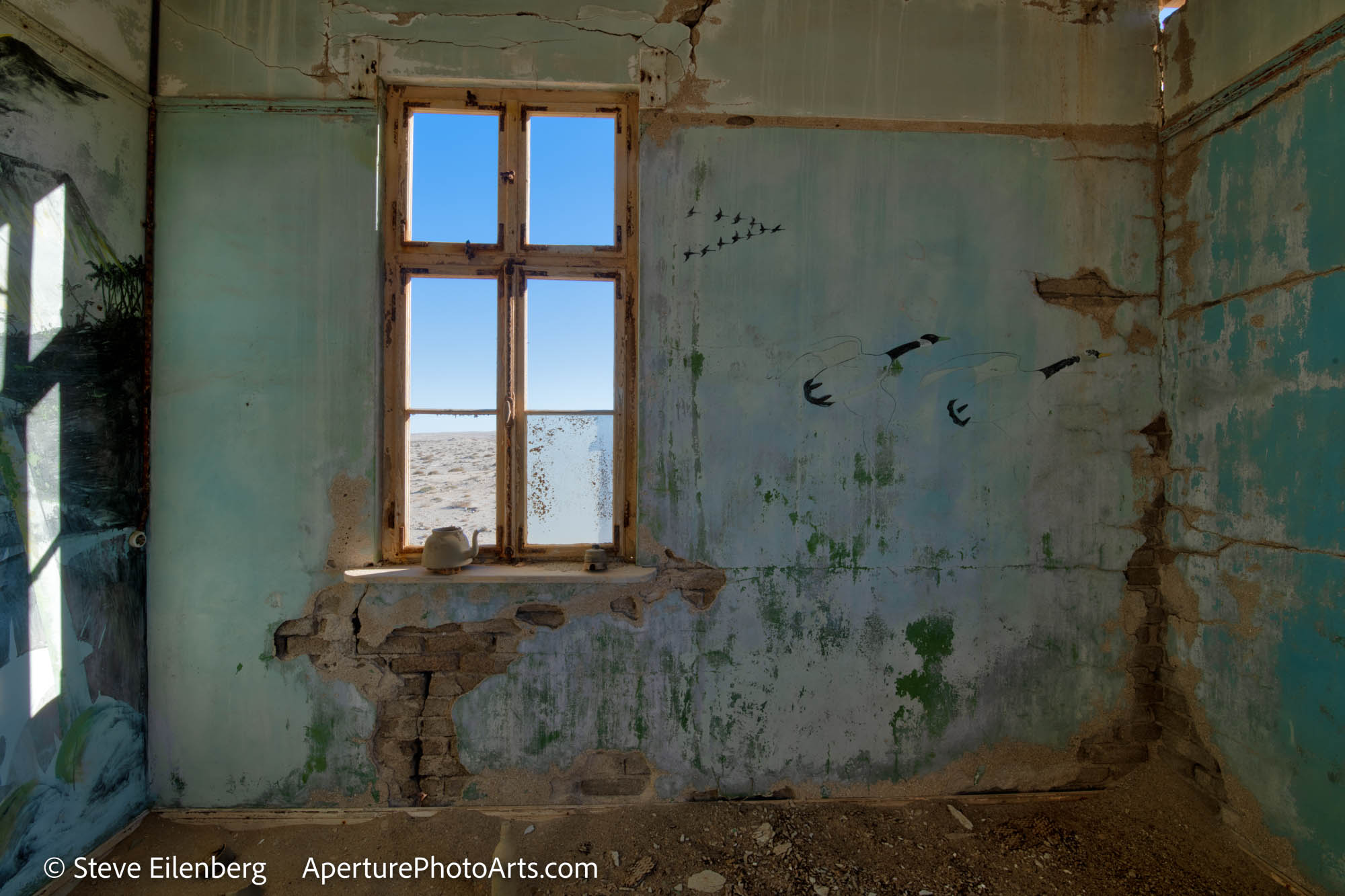
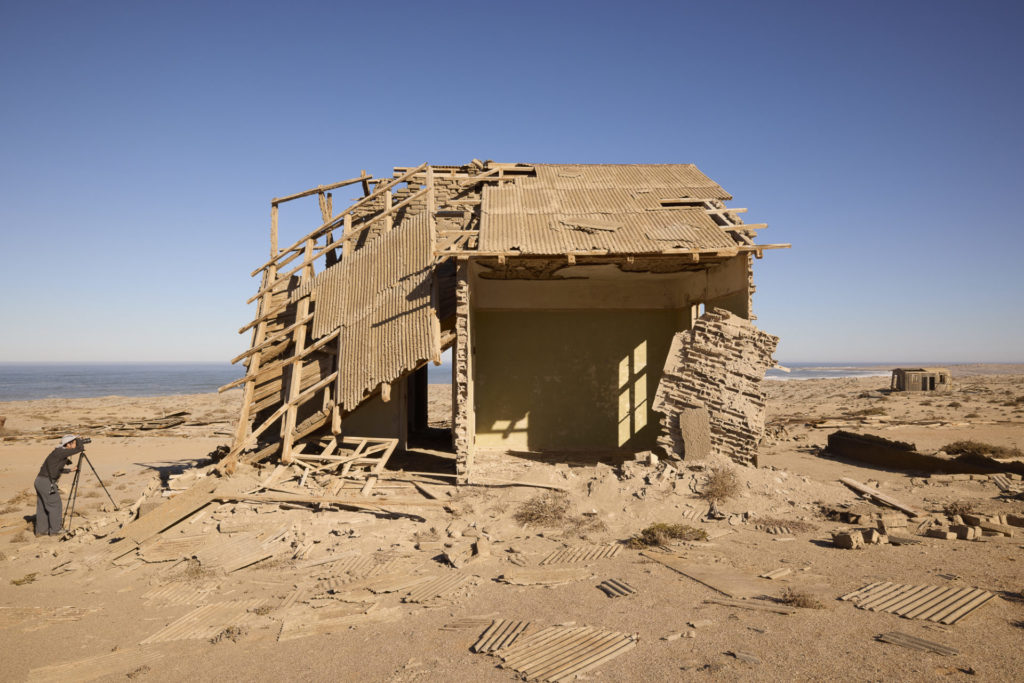

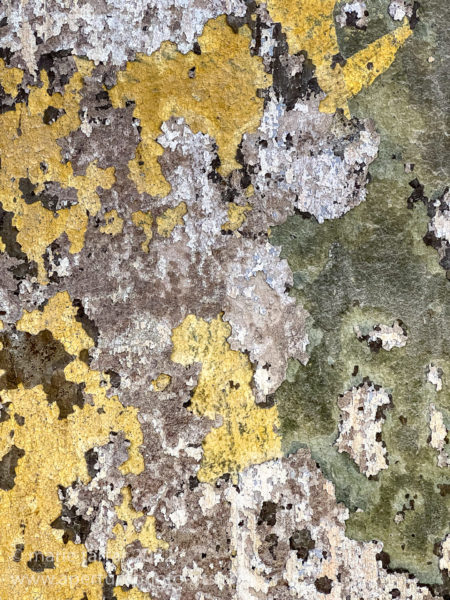
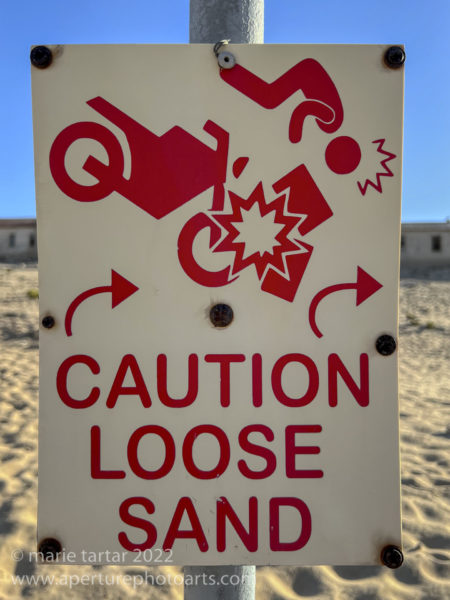
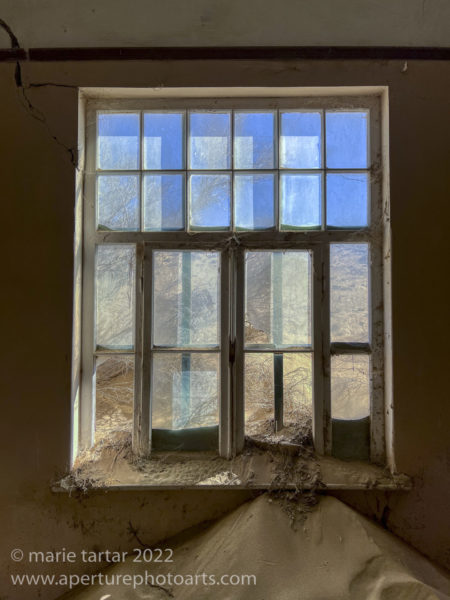
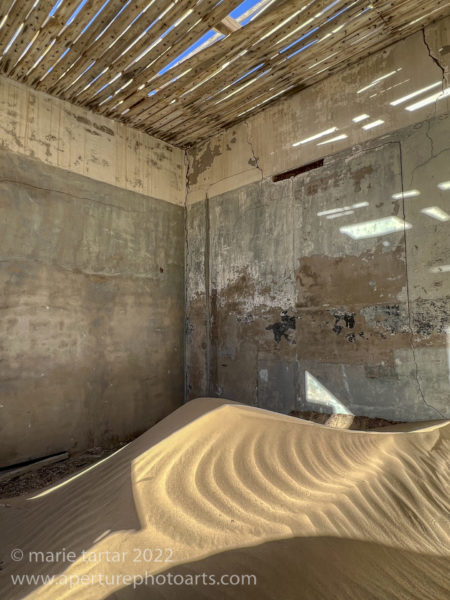
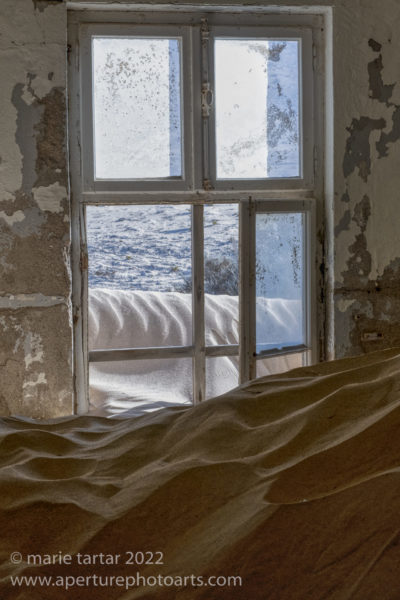



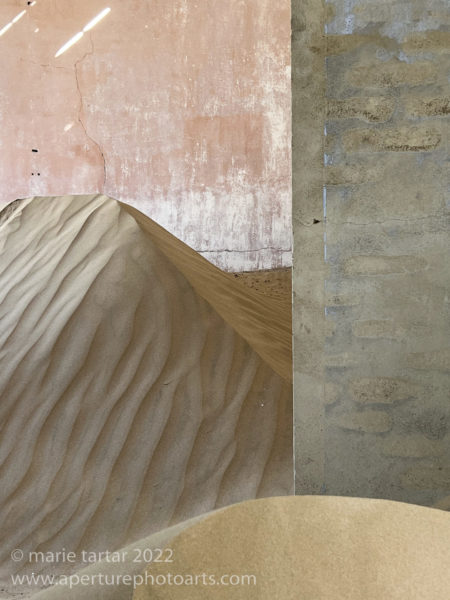

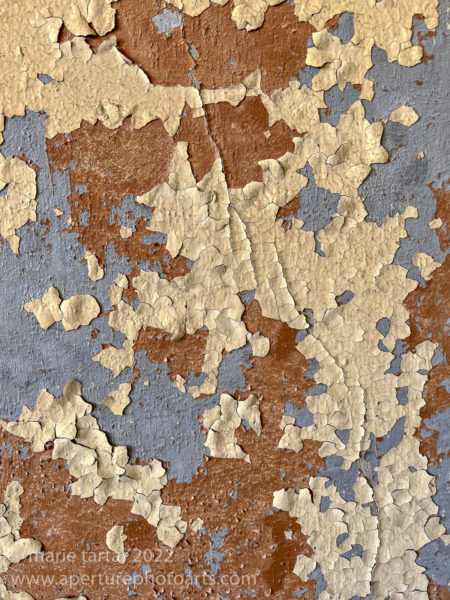
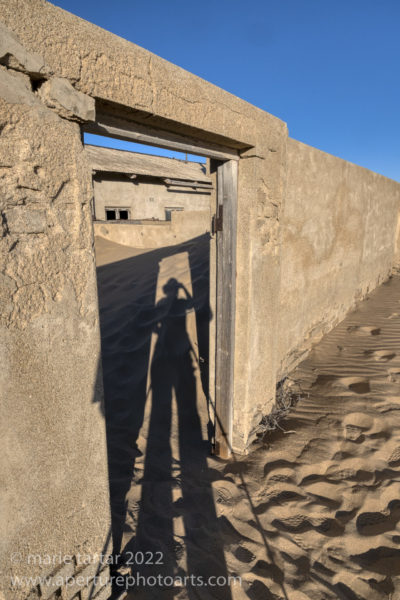
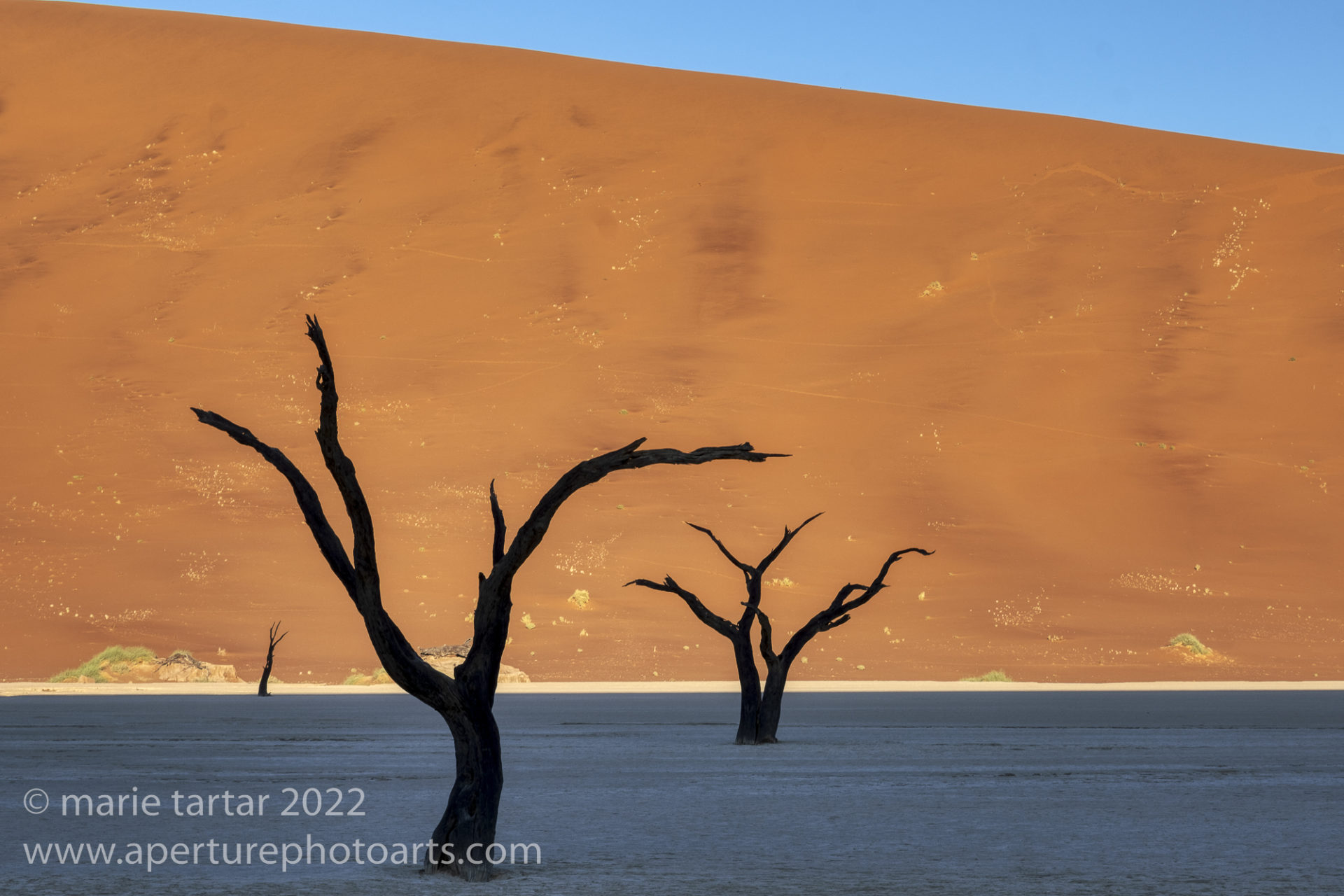
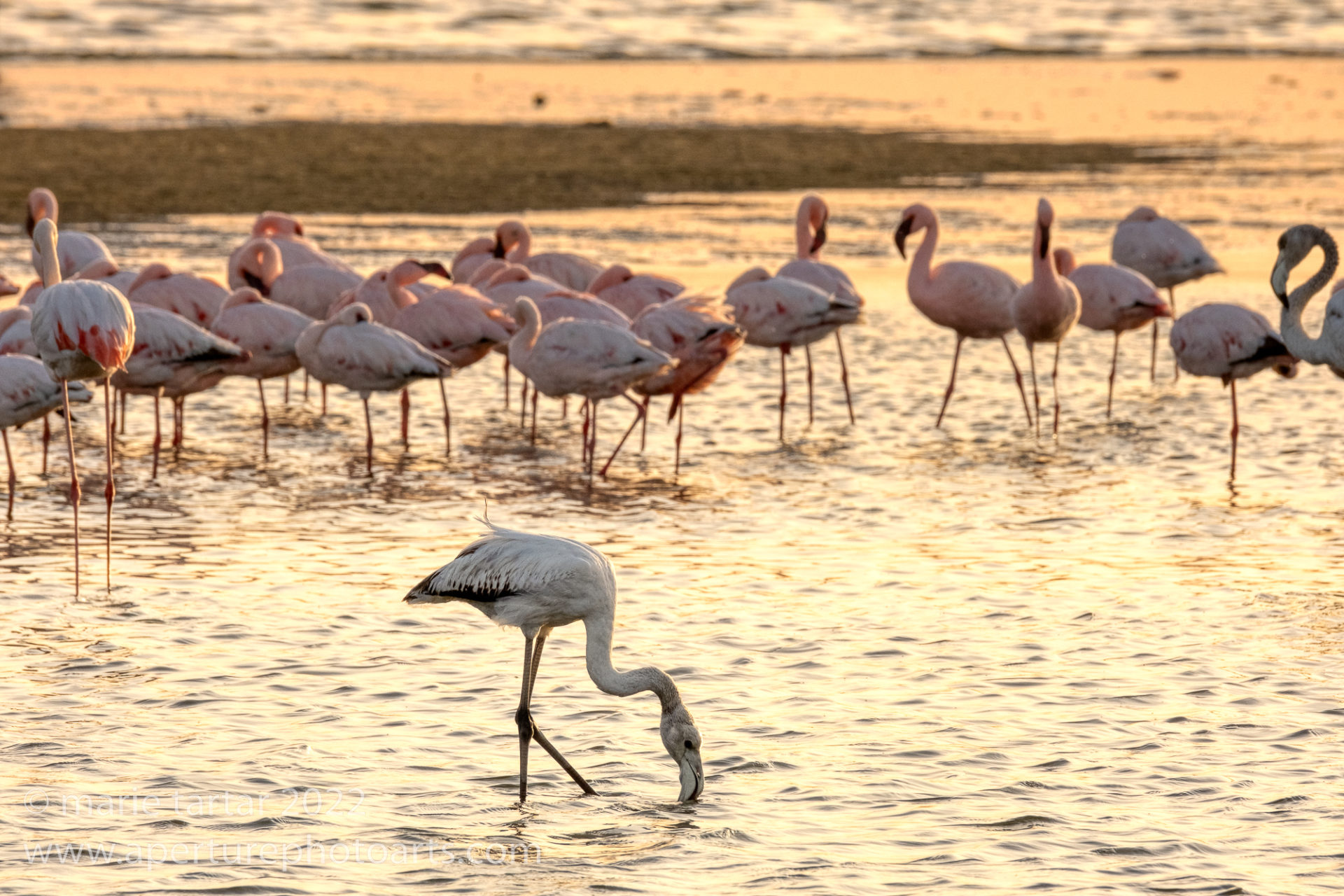
Hi Marie,
The play of light and shadows made by crumbling infrastructure is particularly appealing to my architectural sense of aesthetics. The sand piling within and just visible through the windows ass a surreal touch.
This is a particularly intriguing set of photographs.
Barb (from Sedona)
Hi Barb, Thanks for looking-I wasn’t sure what to expect from this segment of the trip but ended up finding it most thought provoking, intriguing and disturbing.
-Marie
Marie,
Through your images and text you have masterfully captured the emotions and essence of the time in Kolmanskop and Elizabeth Bay. Very well done. 👏👏👏
Hi Jan, Thank you so much! That was such a strange and mysterious place. I look forward to seeing more of your images from our trip!
-Marie
Many of the interior photos remind me of your Tufkenkian artisan carpet, what beauty you find in unexpected places. s
There was a certain austere beauty in some of these forlorn structures, with their faded colors and patterns mirroring the subdued voices of those former occupants.
-Marie